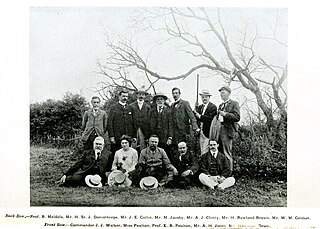
Horace St. John Kelly Donisthorpe was an eccentric British myrmecologist and coleopterist, memorable in part for his enthusiastic championing of the renaming of the genus Lasius after him as Donisthorpea, and for his many claims of discovering new species of beetles and ants.

Dolichoderinae is a subfamily of ants, which includes species such as the Argentine ant, the erratic ant, the odorous house ant, and the cone ant. The subfamily presents a great diversity of species throughout the world, distributed in different biogeographic realms, from the Palearctic, Nearctic, Afrotropical region and Malaysia, to the Middle East, Australian, and Neotropical regions.

Prionomyrmex is an extinct genus of bulldog ants in the subfamily Myrmeciinae of the family Formicidae. It was first described by Gustav Mayr in 1868, after he collected a holotype worker of P. longiceps in Baltic amber. Three species are currently described, characterised by their long mandibles, slender bodies and large size. These ants are known from the Eocene and Late Oligocene, with fossil specimens only found around Europe. It is suggested that these ants preferred to live in jungles, with one species assumed to be an arboreal nesting species. These ants had a powerful stinger that was used to subdue prey. In 2000, it was suggested by Cesare Baroni Urbani that the living species Nothomyrmecia macrops and a species he described both belonged to Prionomyrmex, but this proposal has not been widely accepted by the entomological community. Instead, scientists still classify the two genera distinctive from each other, making Nothomyrmecia a valid genus.

Dolichoderus is a genus of ants found worldwide.
Aphaenogaster donisthorpei is an extinct species of ant in formicid subfamily Myrmicinae known from a Late Eocene fossil from North America. A. donisthorpei was one of two Aphaenogaster species described in the 1930 paper.

Emplastus is an extinct morphogenus of ants in the subfamily Dolichoderinae, known from fossils found in Asia and Europe. The genus contains twelve species described from sites in England, Eastern Europe and Far Eastern Russia.
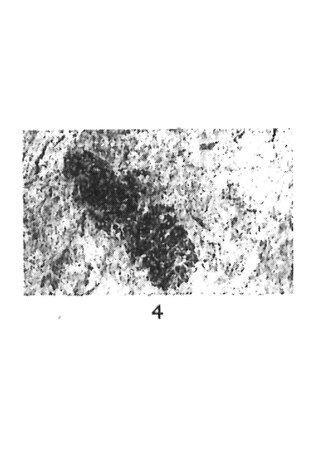
Dolichoderus affectus is an extinct species of ant in the genus Dolichoderus. Described by Théobald in 1937, the fossils were discovered in France.
Dolichoderus angusticornis is a species of ant in the genus Dolichoderus. Described by John S. Clark in 1930, the species is endemic to Australia, found in dry scrub heath in Western Australia and South Australia. Workers are diurnal and foraging during the day and at night.
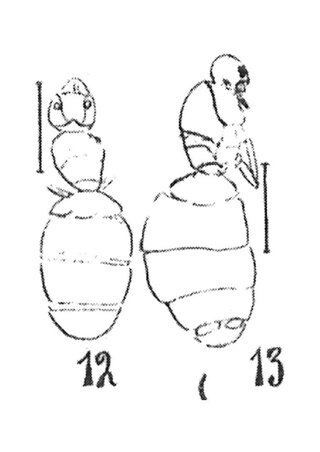
Dolichoderus bruneti is an extinct species of ant in the genus Dolichoderus. Described by Théobald in 1937, the fossils were discovered in France.
Dolichoderus clarki is a species of ant in the genus Dolichoderus. Described by William Morton Wheeler in 1935, the species is found in wet sclerophyll areas of the central coast of New South Wales and the Australian Capital Territory. Workers of this species are known to forage on ground and on low vegetation.
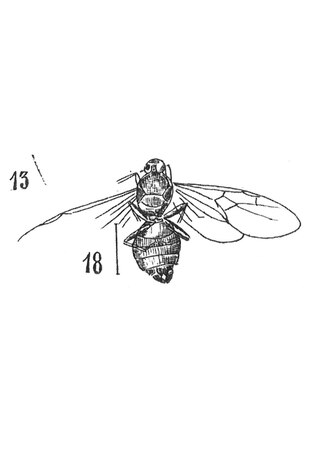
Dolichoderus coquandi is an extinct species of ant in the genus Dolichoderus. Described by Théobald in 1937, the fossils were discovered in France.
Dolichoderus crawleyi is a species of ant in the genus Dolichoderus. Described by Horace Donisthorpe in 1917, the species is endemic to Singapore.
Dolichoderus explicans is an extinct species of Oligocene ant in the genus Dolichoderus. Described by Förster, 1891, a fossilised queen was discovered in Germany.

Dolichoderus kinabaluensis is a species of ant in the genus Dolichoderus. Described by Dill in 2002, the species is endemic to Borneo.
Dolichoderus kutscheri is an extinct species of ant in the genus Dolichoderus. Described by Dlussky in 2008, the fossils of the species were found in the Bitterfeld amber, and is most likely to be from the Late Oligocene.
Dolichoderus lactarius is a species of ant in the genus Dolichoderus. Described by Smith in 1860, the species is endemic to Indonesia.
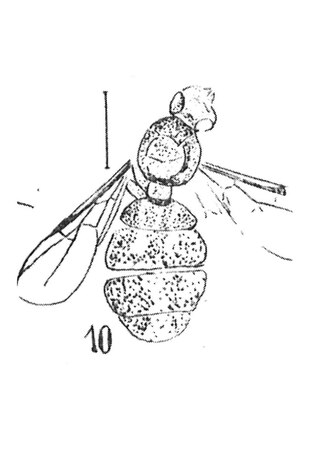
Dolichoderus oviformis is an extinct species of Oligocene ant in the genus Dolichoderus. Described by Théobald in 1937, fossilised males and queens were found in France and have been described.

Dolichoderus sulcaticeps is a species of ant in the genus Dolichoderus. Described by Mayr in 1870, the species is endemic to Borneo, Indonesia, Malaysia, Thailand and Vietnam.
Dolichoderus pinguis is an extinct species of formicid in the ant subfamily Dolichoderinae known from a fossil found in Asia. The species is one of a number in the genus described from fossils.











